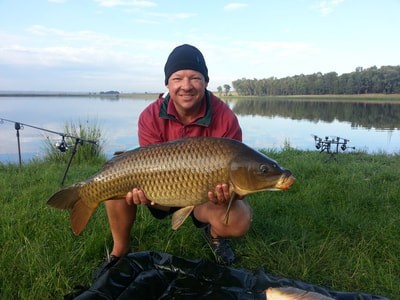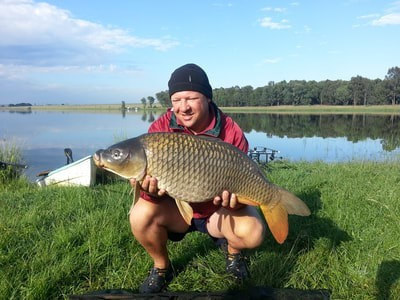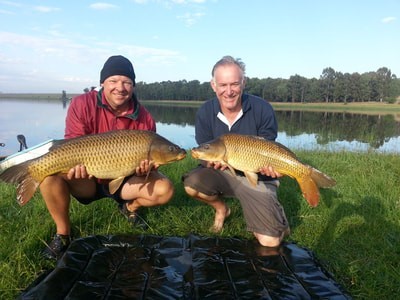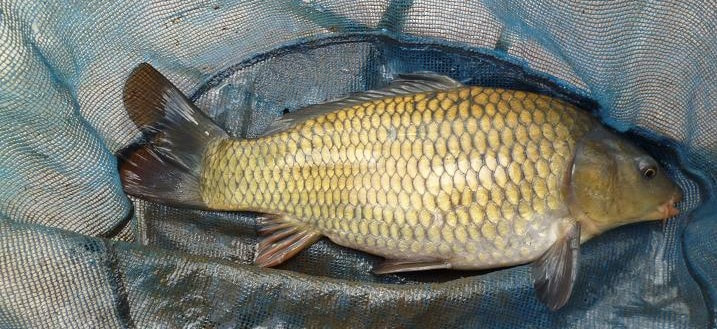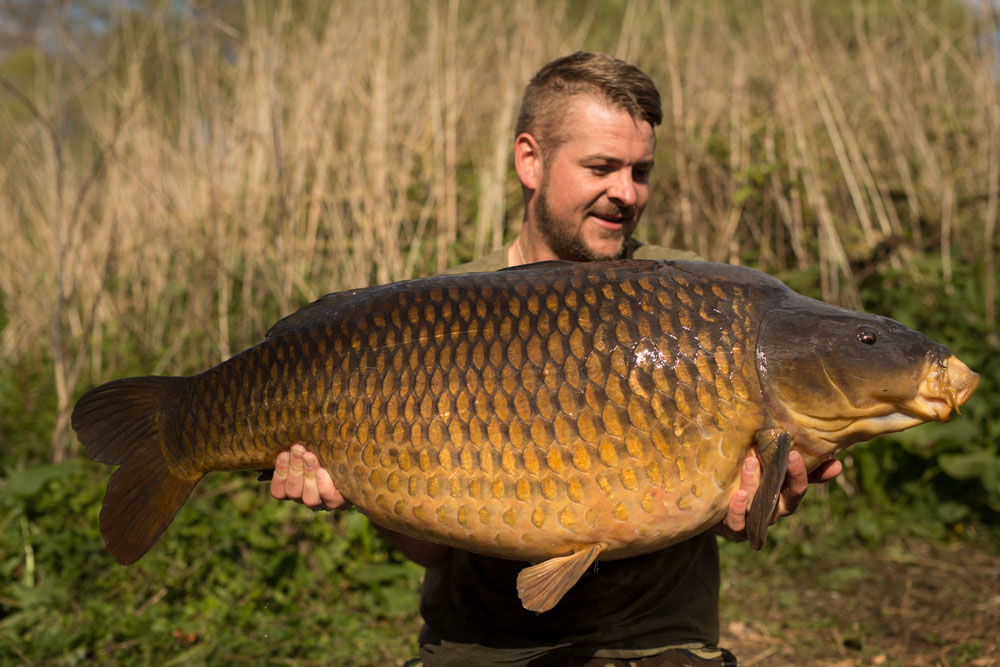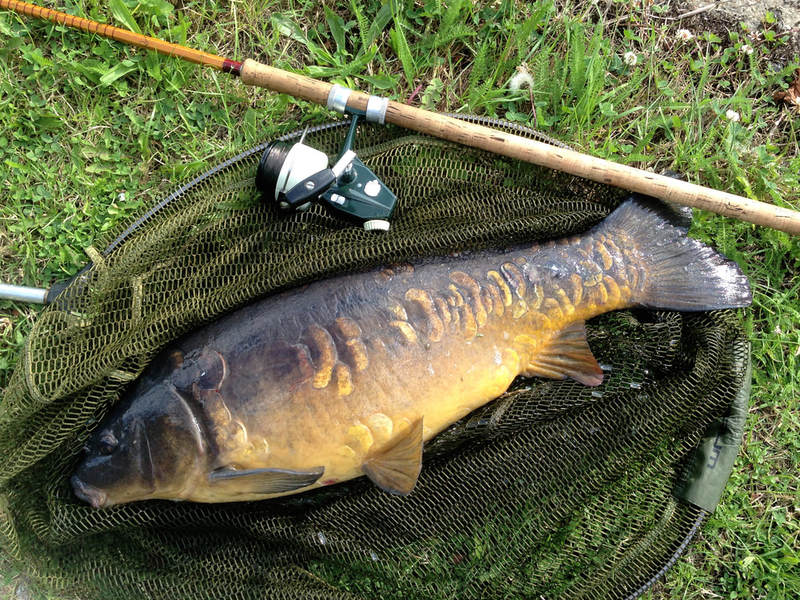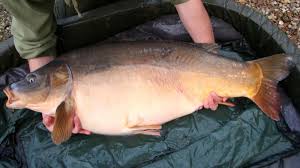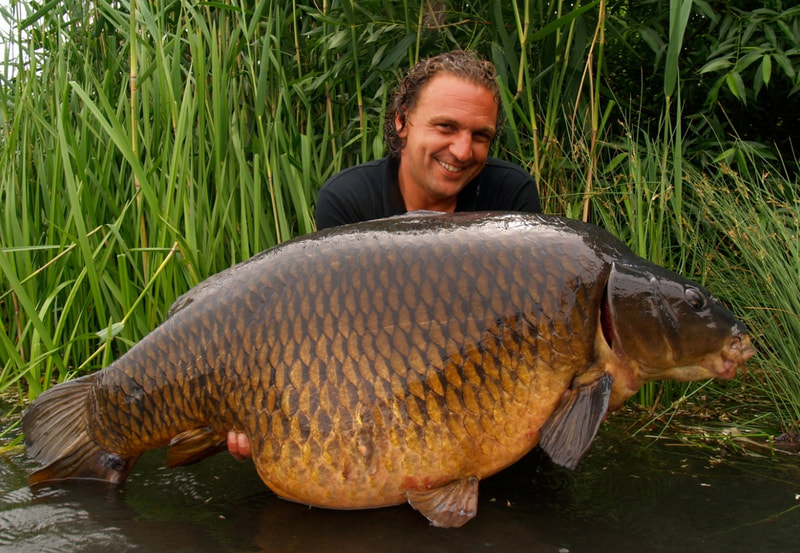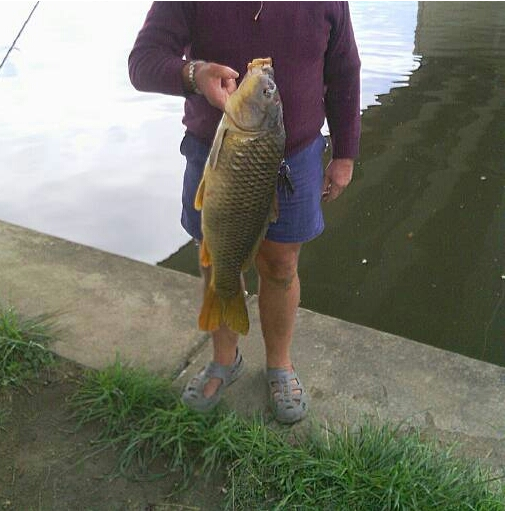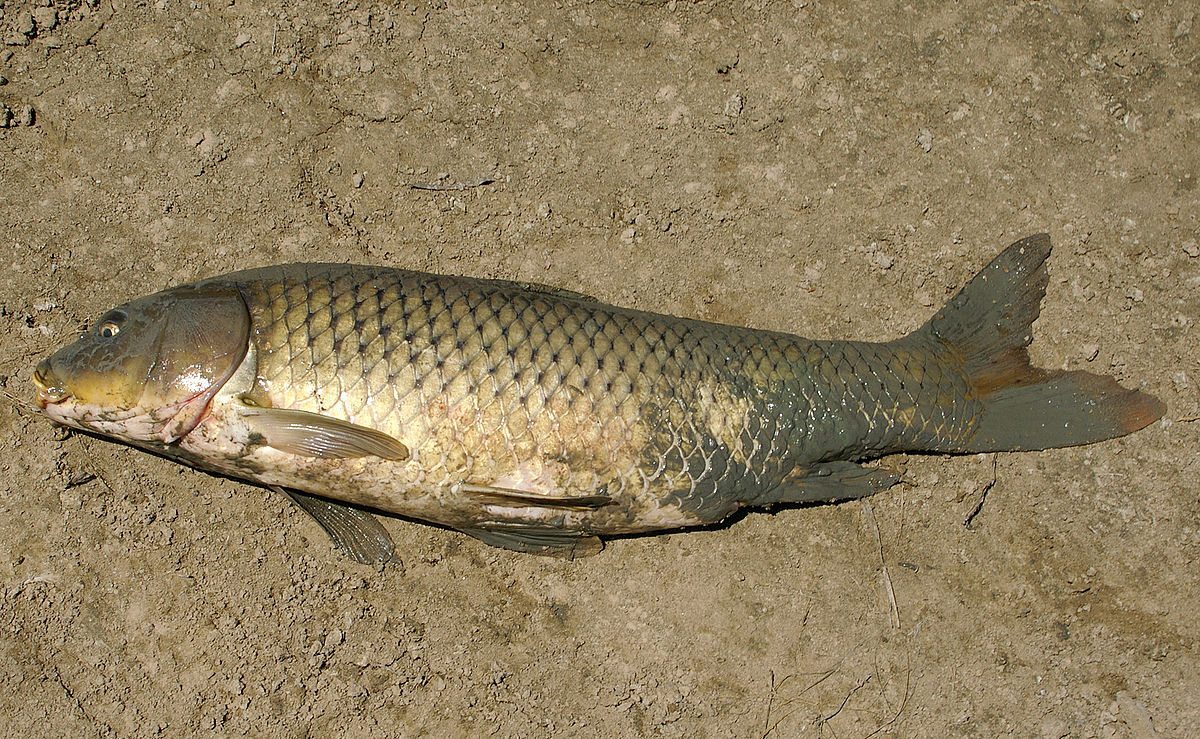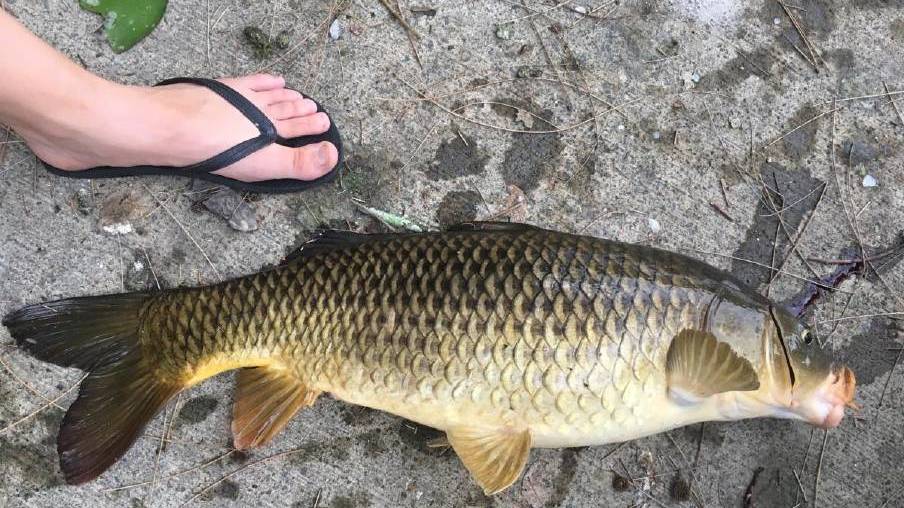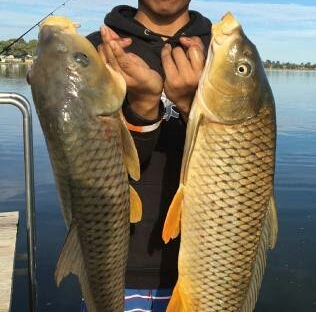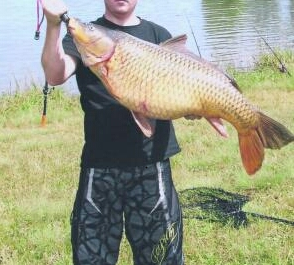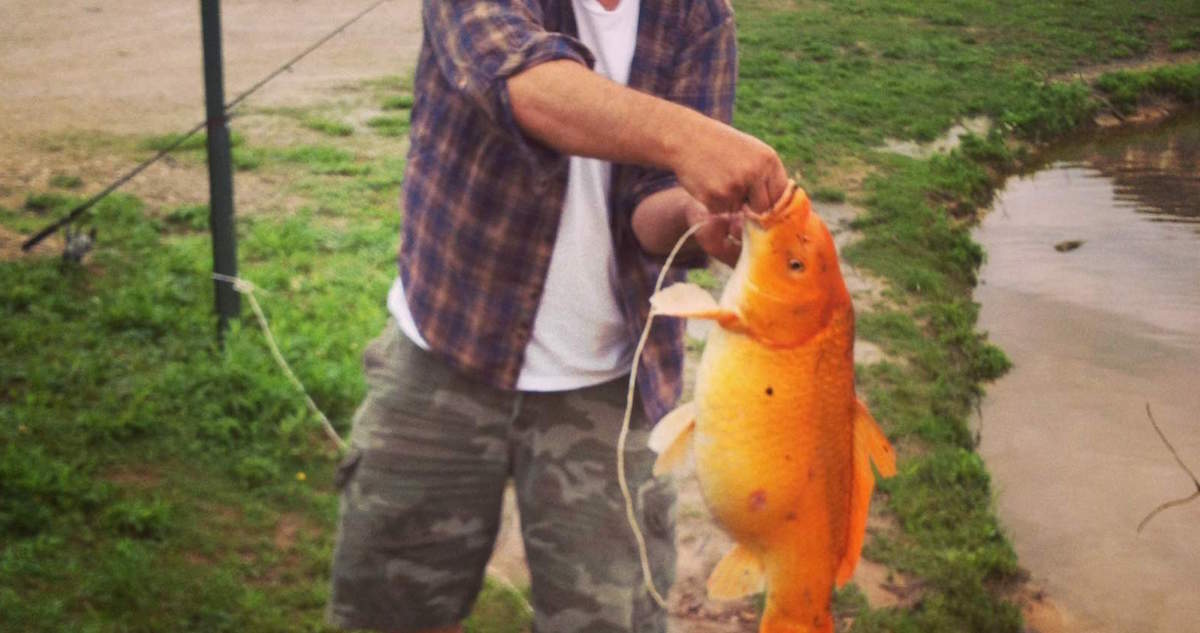CLUB RULES - WESTERN AUSTRALIA
GENERAL RULES:
1.1 All Club members and Visitors must be in possession of a photo ID, valid fishing licence, and fish according to the guidelines. ****This only apply to venues outside Golden Ponds****
1.2 The Club promote Catch and Release of all fish (Including Carp)
1.3 Club Competitions can consist of day or day-night competitions.
1.4 Competition times:
1.4.1 Day Competition times:
- Meeting and entries at 07h00; competition starts at 08h00 and ends at 14h00
1.4.2 Overnight competition times:
- Same as Day competitions except that the competition will end 12pm on the Sunday. There will also be a weigh-in period of one hour between 15h00 – 16h00 during which anglers will not be allowed to fish or put any feed in the water.
1.5 Should weather conditions deteriorate to such an extent that normal angling is no longer possible or safe, e.g. lightning, the Officer in Charge (OIC) of the day in consultation with the anglers, may pause, shorten or call the competition off. These bad weather rules are put in place for the safety of those who are in attendance and anyone who disregard them may be disqualified and or receive additional penalties.
If the circumstances are found to be dangerous and the competition cancelled then all participants will receive 5 Ranking points for attending
1.6 Anglers attending the competition are not allowed to fish in the competition area 24 hours prior to the start of a competition.
1.7 Age categories are as follows:
1.7.1 Seniors: male anglers who turn 19 after 1 July and older.
1.7.2 Ladies: female anglers who turn 19 after 1 July and older
1.7.3 Juniors: male/ female anglers who will be 18 or younger by 30 June.
1.7.4 Mini-Juniors: male/ female anglers who will be 12 or younger by 30 June
1.7.5 Masters: male/ female anglers who will be 50 or older by 30 June. (This Category will only come into effect once we have enough members)
1.8 Visitors are welcome to participate at Club Competitions but are required to abide by all rules of the Club, venue, and any additional rules set by the OIC of the day. All visitors are required to pay the relevant venue fees for the day. Visitors will be allowed to take part and contribute towards the "BIggest Carp" prizemoney pool. Visitors are also allowed to participate in the competition standings if it is their intention to join the club. Visitor standings / points can be accumulated for up to 2 months after which it will expire. A Visitor will be required to join the club after the 2nd visit within 12 months.
1.9 The competition area will be announced by the Officer in Charge (OIC) of the day prior to the start of the competition. Anglers are only allowed to sit within the identified competition area. Numbers will be drawn prior to the start of the competition and will be used to determine the order of entry to the competition area or the angler’s allocated peg number. Anglers will not be allowed to move during a competition except if there is a valid reason and agreed to by the OIC. The angler will be required to do a redraw from the available pegs.
1.9.1 Order of entry:
This can be used for open or pegged venue competitions. The number drawn determine in which order anglers will drive off to their preferred spots. The angler who draw number 1 will drive off first followed by number 2 about 20 seconds later. Number 2 must first wait for no.1 to park on his preferred spot before no.2 can secure his. The person who draw the last peg will have to settle for what’s left and secure his / their spot last.
1.9.2 Pegged bank:
Participants will draw a number and sit at the corresponding peg. Families or participants who wish to sit together may be issued two adjacent pegs. Pegs will be placed a minimum of 20 meters apart.
1.10 An angler or the helper may wade to net a fish or to loosen snagged lines. However, in the process the angler, or the helper, may not wade deeper than his/her armpit and must stay on his/her feet at all times.
1.11 No angler except for mini - juniors may receive assistance with casting, striking or playing a fish.
1.11.1 The person assisting the mini – junior with casting must kneel on at least one knee and may not use a rod in excess of 10 ft.
1.12 Anglers are required to tidy up at the end of each competition and leave the area in a condition better than what they found it, i.e. removing all litter, close gates, etc.
1.13 Casting must be done from the natural bank or any other place behind the casting line as indicated by placing of the pegs.
2. TACKLE, BAIT AND FEEDING:
2.1 Anglers may not fish with more than two rods at any time.
2.1.1 Each rod in use must be placed horizontally on a purposely made Bank Angling fishing stand, pod or banksticks.
2.2 Anglers are allowed to use a single hook Rietvlei rig, recognised Carp Specimen rigs as well as feeders and rigs used in Feeder fishing.
2.3 Hair rigs, bait bands and super stops are allowed.
2.4 No beads allowed on the hooklink.
2.5 Maximum hooklink length is 30cm.
2.6 No floats, wagglers or surface fishing
2.7 Anglers are only allowed to use one barbless hook. No circle hooks as fish must be able to loose the hook in case the line breaks.
2.8 Bite alarms are allowed.
2.9 Only manual baiting is allowed which include hand feeding and the use of throwing sticks, baiting spoons and all means where a rod is used including baitball launchers, rockets and spombs. No feeding by hand or catapult is allowed.
2.10 Anglers are allowed to use a third rod to feed whilst fishing as long as there are no hooks attached.
2.11 The use of boats, canoes, drones, bait boats, fishfinders or any other remote control devices are not allowed.
3. FISH LANDING AND HANDLING:
3.1 Fish can only be landed by means of a suitable fish- friendly landing net with no knots.
3.2 Fish may not be lifted through the air or onto the bank.
3.3 Anglers must use an unhooking mat / cradle or alternatively unhook the fish in the landing net without the net touching the ground.
3.4 Fish are to be kept in recognised and purposely made fish-friendly keepnets and carp sacks.
3.5 Landed fish must be placed in the keepnet before the angler may cast again.
3.6 Anglers must ensure that they have enough keepnets / sacks to safely accommodate the amount of fish they catch.
3.7 Maximum weight per keepnet is 25kg
3.8 It is requirement that anglers handle fish with care. Bank Angler Angling Clubs strongly encourages catch and release and all-round conservation of all Fauna and Flora.
4. WEIGHABLE FISH:
4.1 Until further notice only variants of Carp, Koi, Goldfish, Bream, Redfin Perch, Catfish and Cobbler will be allowed as Weighable fish species. No other fish may be placed in the keepnet.
4.2 All fish in the keepnet will count towards the overall weight score.
4.3 Anglers are to remove their lines from the water as soon as the competition ends. Only fish already hooked before the signal sounds/ competition end may be kept and placed in the keepnet. The angler must shout "Fish on" or Two fish on" in case both rods went BEFORE the signal. An angler must land the fish within ten minutes after the end of the competition or 15 minutes if both rods went.
4.4 A fish hooked on any part of the body may be placed in the angler’s keepnet.
4.5 Should two anglers hook the same fish, the fish will be awarded to the angler whose hook is in the fish’s mouth. If both anglers’ hooks are in the fish’s mouth, then the fish will be released.
4.6 No dead fish will be weighed
5. WEIGHING OPERATIONS:
5.1 A moving scale and associated equipment will be used to weigh fish.
5.2 Weigh-in commences as soon as possible after the end of the competition.
5.3 If an angler needs to leave the competition before the competition is over, the angler must make arrangements with the Weighmaster to have the fish weighed.
5.4 In all weighing operations the scales must be identical, both in regards to the model and brand.
5.5 The weigh sling will be dampened before use and the scales zeroed using the damp sling.
5.6 Carp sacks / Keepnets must remain in the water until all the weigh-in equipment is setup.
5.7 Once the fish has been weighed the fish must be returned to the water, under the supervision of the Weighmaster.
5.8 No complaint regarding weight will be accepted after the weighing procedure is finished and the fish has been released.
6. SCORING:
6.1 Only paid-up members or members that have made prior financial arrangement will be awarded points towards the annual Club standings and awards. Members that have not paid their Membership fees (or made financial arrangements) will be deemed Visitors and scores will be forfeited after two months.
6.2 There are 2 different points awarded, Competition points and ranking point. Competition points determine your ranking for the club competition. The ranking point then gets allocated to the club’s annual leaderboard.
6.2.1 Competition Points
The competition is based on total weight.
If two anglers catch the same weight then the first place will be shared. Both will receive maximum point and the next position will fall away.
6.2.2 Ranking Points
Ranking points are awarded as follows:
• The winner of the day is awarded 20 points
• The runner up is awarded 18 points
• Third place is awarded 16 points and then one point less for each subsequent placing until 5 points where after all anglers that weighed fish for the day will receive 5 points.
Anglers that do not weigh in any fish will receive 2 points for attendance.
Anglers who attended a competition which was called off will receive 5 Ranking points. (see 1.5.3)
6.3 The combined total of an angler’s 8 best Ranking Points will be used to determine the Club Champion for the year.
6.4 The combined total of an angler’s 6 best Ranking Points will be used when considering an angler’s eligibility to be included in the State team. (More about this in future)
7. CONDUCT:
7.1 Our number one priority is FISHING in an environment where anglers can participate and perform to the best of their ability.
7.2 Anglers are expected to conduct themselves in appropriate manner that is not harmful or offensive to other anglers, guests, the venue or the environment. Members need to comply with the rules of the club and those of the competition venues. Any breaking of the rules, misconduct or damage to property may be subject to disciplinary action and expulsion from the club at the discretion of the committee.
7.3 All noise, including music, is to be kept at a minimum.
7.4 Rowdy unacceptable behaviour or language in the vicinity of other anglers, especially children and family groups, will not be tolerated. The same will apply to our social media and website forums where everyone from the youngest to the oldest member must feel comfortable to ask questions, give answers and participate in general discussions.
7.4.1 Please see the following link for a full list of our Facebook and Forum rules:
https://www.bankangler.com.au/facebook-group-rules-and-disclaimer.html
7.5 Serious misbehaviour will also be reported to the relevant authorities.
7.6 Respectful handling of fish is also an important part of our club and sport. We will only allow or publish photos that reflect this value. No dirty, killed, bloody, badly held or handled fish will therefore be on display and this will apply to forums and all other forms of media. This is after all the shop-window of our sport. The following photos give an idea of what is acceptable and what is not.
In these photos the fish look like they have been treated with care and presented in a clean respectful manor.
1.1 All Club members and Visitors must be in possession of a photo ID, valid fishing licence, and fish according to the guidelines. ****This only apply to venues outside Golden Ponds****
1.2 The Club promote Catch and Release of all fish (Including Carp)
1.3 Club Competitions can consist of day or day-night competitions.
1.4 Competition times:
1.4.1 Day Competition times:
- Meeting and entries at 07h00; competition starts at 08h00 and ends at 14h00
1.4.2 Overnight competition times:
- Same as Day competitions except that the competition will end 12pm on the Sunday. There will also be a weigh-in period of one hour between 15h00 – 16h00 during which anglers will not be allowed to fish or put any feed in the water.
1.5 Should weather conditions deteriorate to such an extent that normal angling is no longer possible or safe, e.g. lightning, the Officer in Charge (OIC) of the day in consultation with the anglers, may pause, shorten or call the competition off. These bad weather rules are put in place for the safety of those who are in attendance and anyone who disregard them may be disqualified and or receive additional penalties.
If the circumstances are found to be dangerous and the competition cancelled then all participants will receive 5 Ranking points for attending
1.6 Anglers attending the competition are not allowed to fish in the competition area 24 hours prior to the start of a competition.
1.7 Age categories are as follows:
1.7.1 Seniors: male anglers who turn 19 after 1 July and older.
1.7.2 Ladies: female anglers who turn 19 after 1 July and older
1.7.3 Juniors: male/ female anglers who will be 18 or younger by 30 June.
1.7.4 Mini-Juniors: male/ female anglers who will be 12 or younger by 30 June
1.7.5 Masters: male/ female anglers who will be 50 or older by 30 June. (This Category will only come into effect once we have enough members)
1.8 Visitors are welcome to participate at Club Competitions but are required to abide by all rules of the Club, venue, and any additional rules set by the OIC of the day. All visitors are required to pay the relevant venue fees for the day. Visitors will be allowed to take part and contribute towards the "BIggest Carp" prizemoney pool. Visitors are also allowed to participate in the competition standings if it is their intention to join the club. Visitor standings / points can be accumulated for up to 2 months after which it will expire. A Visitor will be required to join the club after the 2nd visit within 12 months.
1.9 The competition area will be announced by the Officer in Charge (OIC) of the day prior to the start of the competition. Anglers are only allowed to sit within the identified competition area. Numbers will be drawn prior to the start of the competition and will be used to determine the order of entry to the competition area or the angler’s allocated peg number. Anglers will not be allowed to move during a competition except if there is a valid reason and agreed to by the OIC. The angler will be required to do a redraw from the available pegs.
1.9.1 Order of entry:
This can be used for open or pegged venue competitions. The number drawn determine in which order anglers will drive off to their preferred spots. The angler who draw number 1 will drive off first followed by number 2 about 20 seconds later. Number 2 must first wait for no.1 to park on his preferred spot before no.2 can secure his. The person who draw the last peg will have to settle for what’s left and secure his / their spot last.
1.9.2 Pegged bank:
Participants will draw a number and sit at the corresponding peg. Families or participants who wish to sit together may be issued two adjacent pegs. Pegs will be placed a minimum of 20 meters apart.
1.10 An angler or the helper may wade to net a fish or to loosen snagged lines. However, in the process the angler, or the helper, may not wade deeper than his/her armpit and must stay on his/her feet at all times.
1.11 No angler except for mini - juniors may receive assistance with casting, striking or playing a fish.
1.11.1 The person assisting the mini – junior with casting must kneel on at least one knee and may not use a rod in excess of 10 ft.
1.12 Anglers are required to tidy up at the end of each competition and leave the area in a condition better than what they found it, i.e. removing all litter, close gates, etc.
1.13 Casting must be done from the natural bank or any other place behind the casting line as indicated by placing of the pegs.
2. TACKLE, BAIT AND FEEDING:
2.1 Anglers may not fish with more than two rods at any time.
2.1.1 Each rod in use must be placed horizontally on a purposely made Bank Angling fishing stand, pod or banksticks.
2.2 Anglers are allowed to use a single hook Rietvlei rig, recognised Carp Specimen rigs as well as feeders and rigs used in Feeder fishing.
2.3 Hair rigs, bait bands and super stops are allowed.
2.4 No beads allowed on the hooklink.
2.5 Maximum hooklink length is 30cm.
2.6 No floats, wagglers or surface fishing
2.7 Anglers are only allowed to use one barbless hook. No circle hooks as fish must be able to loose the hook in case the line breaks.
2.8 Bite alarms are allowed.
2.9 Only manual baiting is allowed which include hand feeding and the use of throwing sticks, baiting spoons and all means where a rod is used including baitball launchers, rockets and spombs. No feeding by hand or catapult is allowed.
2.10 Anglers are allowed to use a third rod to feed whilst fishing as long as there are no hooks attached.
2.11 The use of boats, canoes, drones, bait boats, fishfinders or any other remote control devices are not allowed.
3. FISH LANDING AND HANDLING:
3.1 Fish can only be landed by means of a suitable fish- friendly landing net with no knots.
3.2 Fish may not be lifted through the air or onto the bank.
3.3 Anglers must use an unhooking mat / cradle or alternatively unhook the fish in the landing net without the net touching the ground.
3.4 Fish are to be kept in recognised and purposely made fish-friendly keepnets and carp sacks.
3.5 Landed fish must be placed in the keepnet before the angler may cast again.
3.6 Anglers must ensure that they have enough keepnets / sacks to safely accommodate the amount of fish they catch.
3.7 Maximum weight per keepnet is 25kg
3.8 It is requirement that anglers handle fish with care. Bank Angler Angling Clubs strongly encourages catch and release and all-round conservation of all Fauna and Flora.
4. WEIGHABLE FISH:
4.1 Until further notice only variants of Carp, Koi, Goldfish, Bream, Redfin Perch, Catfish and Cobbler will be allowed as Weighable fish species. No other fish may be placed in the keepnet.
4.2 All fish in the keepnet will count towards the overall weight score.
4.3 Anglers are to remove their lines from the water as soon as the competition ends. Only fish already hooked before the signal sounds/ competition end may be kept and placed in the keepnet. The angler must shout "Fish on" or Two fish on" in case both rods went BEFORE the signal. An angler must land the fish within ten minutes after the end of the competition or 15 minutes if both rods went.
4.4 A fish hooked on any part of the body may be placed in the angler’s keepnet.
4.5 Should two anglers hook the same fish, the fish will be awarded to the angler whose hook is in the fish’s mouth. If both anglers’ hooks are in the fish’s mouth, then the fish will be released.
4.6 No dead fish will be weighed
5. WEIGHING OPERATIONS:
5.1 A moving scale and associated equipment will be used to weigh fish.
5.2 Weigh-in commences as soon as possible after the end of the competition.
5.3 If an angler needs to leave the competition before the competition is over, the angler must make arrangements with the Weighmaster to have the fish weighed.
5.4 In all weighing operations the scales must be identical, both in regards to the model and brand.
5.5 The weigh sling will be dampened before use and the scales zeroed using the damp sling.
5.6 Carp sacks / Keepnets must remain in the water until all the weigh-in equipment is setup.
5.7 Once the fish has been weighed the fish must be returned to the water, under the supervision of the Weighmaster.
5.8 No complaint regarding weight will be accepted after the weighing procedure is finished and the fish has been released.
6. SCORING:
6.1 Only paid-up members or members that have made prior financial arrangement will be awarded points towards the annual Club standings and awards. Members that have not paid their Membership fees (or made financial arrangements) will be deemed Visitors and scores will be forfeited after two months.
6.2 There are 2 different points awarded, Competition points and ranking point. Competition points determine your ranking for the club competition. The ranking point then gets allocated to the club’s annual leaderboard.
6.2.1 Competition Points
The competition is based on total weight.
If two anglers catch the same weight then the first place will be shared. Both will receive maximum point and the next position will fall away.
6.2.2 Ranking Points
Ranking points are awarded as follows:
• The winner of the day is awarded 20 points
• The runner up is awarded 18 points
• Third place is awarded 16 points and then one point less for each subsequent placing until 5 points where after all anglers that weighed fish for the day will receive 5 points.
Anglers that do not weigh in any fish will receive 2 points for attendance.
Anglers who attended a competition which was called off will receive 5 Ranking points. (see 1.5.3)
6.3 The combined total of an angler’s 8 best Ranking Points will be used to determine the Club Champion for the year.
6.4 The combined total of an angler’s 6 best Ranking Points will be used when considering an angler’s eligibility to be included in the State team. (More about this in future)
7. CONDUCT:
7.1 Our number one priority is FISHING in an environment where anglers can participate and perform to the best of their ability.
7.2 Anglers are expected to conduct themselves in appropriate manner that is not harmful or offensive to other anglers, guests, the venue or the environment. Members need to comply with the rules of the club and those of the competition venues. Any breaking of the rules, misconduct or damage to property may be subject to disciplinary action and expulsion from the club at the discretion of the committee.
7.3 All noise, including music, is to be kept at a minimum.
7.4 Rowdy unacceptable behaviour or language in the vicinity of other anglers, especially children and family groups, will not be tolerated. The same will apply to our social media and website forums where everyone from the youngest to the oldest member must feel comfortable to ask questions, give answers and participate in general discussions.
7.4.1 Please see the following link for a full list of our Facebook and Forum rules:
https://www.bankangler.com.au/facebook-group-rules-and-disclaimer.html
7.5 Serious misbehaviour will also be reported to the relevant authorities.
7.6 Respectful handling of fish is also an important part of our club and sport. We will only allow or publish photos that reflect this value. No dirty, killed, bloody, badly held or handled fish will therefore be on display and this will apply to forums and all other forms of media. This is after all the shop-window of our sport. The following photos give an idea of what is acceptable and what is not.
In these photos the fish look like they have been treated with care and presented in a clean respectful manor.
These are examples of what will not be allowed:
11. MARKETING BY BUSINESSES AND GROUPS:
No person, business or group or any of its employees, associates or members are allowed to directly or indirectly market, trade or promote any service, event, activity or product without the written consent of Bank Angler. These privileges will most likely only be reserved for Businesses and Groups we associate with and whose intentions are to add value for our club, our members or to assist us in achieving our goals.
12. REGISTERING A RECORD:
12.1 Only fish caught during an event hosted or controlled by Bank Angler Australia, a Bank Angler Club or the Australian Bank Anglers Confederation will be eligible to be recognized as a record.
12.2 The weigh-in must be witnessed by the angler, a committee member and at least one other member. Their details and signatures must also be recorder on the Record Application form. The same form can be used for State and National records. The Angler will receive an Official Record Conformation.
12.3 Ensuring the details of the record is recorded and correct remain the responsibility of the Angler.
13. DISCLAIMER:
13.1 It is clearly understood and accepted that any person or persons participating or attending events or competitions do so at their own sole risk and any such person shall not claim against or hold liable the club, the committee or any official or servant or other persons appointed by or acting on behalf of the said organisers or in connection with the contest for any injuries or loss suffered by himself or herself or any other person to by any act, omission or negligence on the part of the committee or any other sponsors or official servants as aforesaid.
13.2 Competitors and others who attend shall indemnify the Club, Committee, Club members and Sponsors against any claim.
13.3 The organizers may at any time before the commencement or during the Contest, refuse to accept, cancel and/or reject entry or participation without assigning any reason thereof and without being in any way whatsoever liable to any person whatsoever for so doing.
No person, business or group or any of its employees, associates or members are allowed to directly or indirectly market, trade or promote any service, event, activity or product without the written consent of Bank Angler. These privileges will most likely only be reserved for Businesses and Groups we associate with and whose intentions are to add value for our club, our members or to assist us in achieving our goals.
12. REGISTERING A RECORD:
12.1 Only fish caught during an event hosted or controlled by Bank Angler Australia, a Bank Angler Club or the Australian Bank Anglers Confederation will be eligible to be recognized as a record.
12.2 The weigh-in must be witnessed by the angler, a committee member and at least one other member. Their details and signatures must also be recorder on the Record Application form. The same form can be used for State and National records. The Angler will receive an Official Record Conformation.
12.3 Ensuring the details of the record is recorded and correct remain the responsibility of the Angler.
13. DISCLAIMER:
13.1 It is clearly understood and accepted that any person or persons participating or attending events or competitions do so at their own sole risk and any such person shall not claim against or hold liable the club, the committee or any official or servant or other persons appointed by or acting on behalf of the said organisers or in connection with the contest for any injuries or loss suffered by himself or herself or any other person to by any act, omission or negligence on the part of the committee or any other sponsors or official servants as aforesaid.
13.2 Competitors and others who attend shall indemnify the Club, Committee, Club members and Sponsors against any claim.
13.3 The organizers may at any time before the commencement or during the Contest, refuse to accept, cancel and/or reject entry or participation without assigning any reason thereof and without being in any way whatsoever liable to any person whatsoever for so doing.

